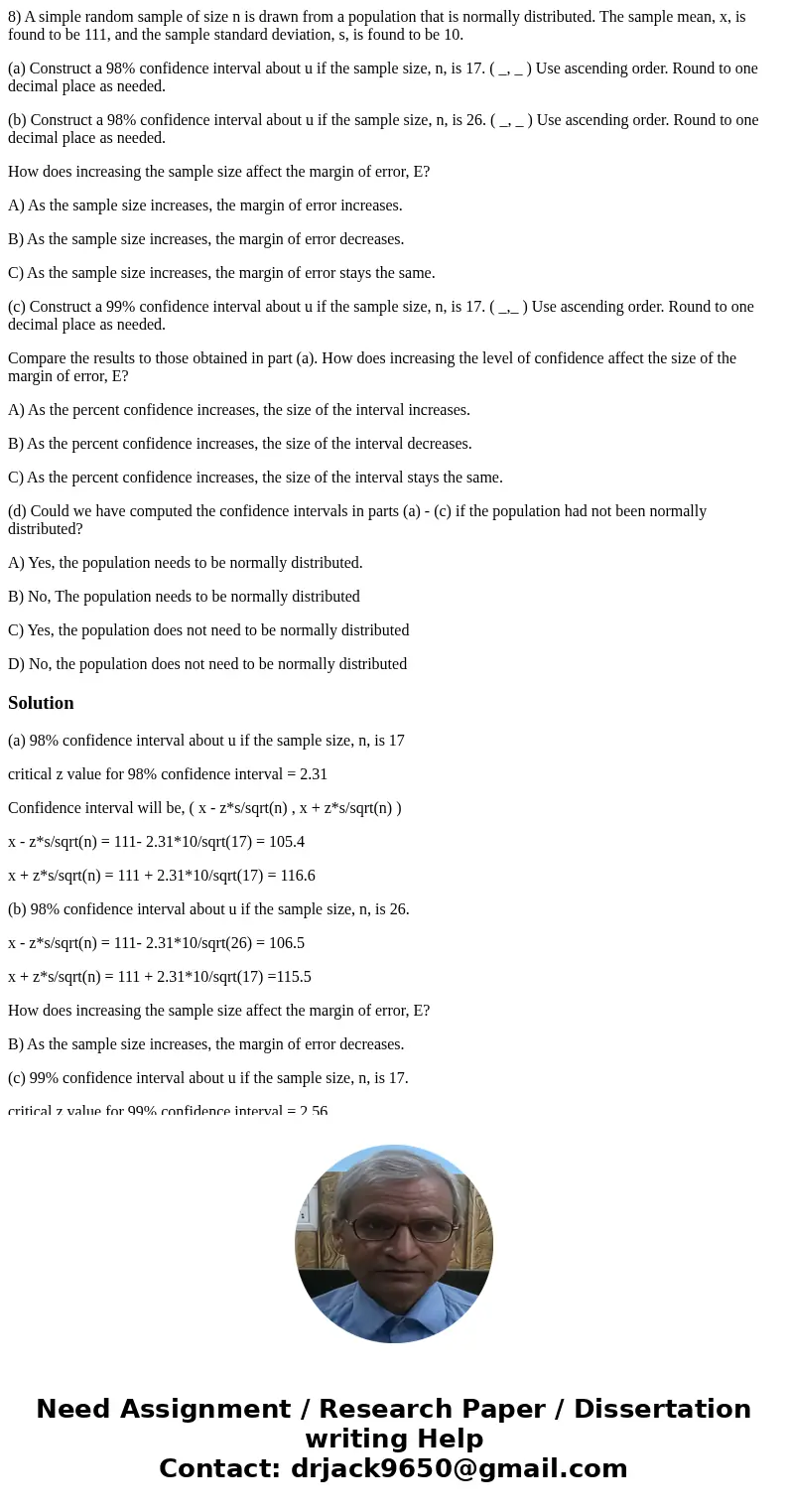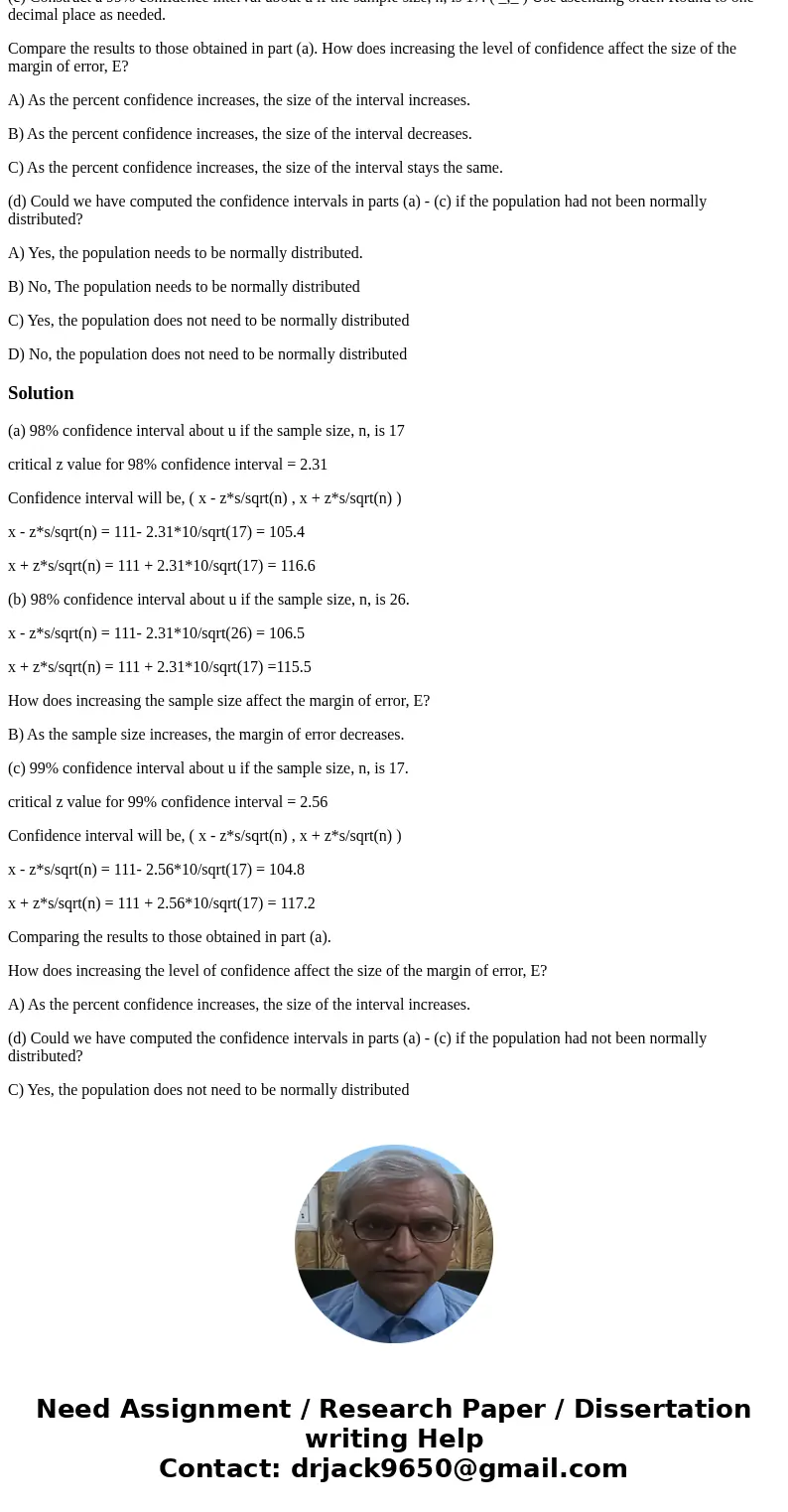8 A simple random sample of size n is drawn from a populatio
8) A simple random sample of size n is drawn from a population that is normally distributed. The sample mean, x, is found to be 111, and the sample standard deviation, s, is found to be 10.
(a) Construct a 98% confidence interval about u if the sample size, n, is 17. ( _, _ ) Use ascending order. Round to one decimal place as needed.
(b) Construct a 98% confidence interval about u if the sample size, n, is 26. ( _, _ ) Use ascending order. Round to one decimal place as needed.
How does increasing the sample size affect the margin of error, E?
A) As the sample size increases, the margin of error increases.
B) As the sample size increases, the margin of error decreases.
C) As the sample size increases, the margin of error stays the same.
(c) Construct a 99% confidence interval about u if the sample size, n, is 17. ( _,_ ) Use ascending order. Round to one decimal place as needed.
Compare the results to those obtained in part (a). How does increasing the level of confidence affect the size of the margin of error, E?
A) As the percent confidence increases, the size of the interval increases.
B) As the percent confidence increases, the size of the interval decreases.
C) As the percent confidence increases, the size of the interval stays the same.
(d) Could we have computed the confidence intervals in parts (a) - (c) if the population had not been normally distributed?
A) Yes, the population needs to be normally distributed.
B) No, The population needs to be normally distributed
C) Yes, the population does not need to be normally distributed
D) No, the population does not need to be normally distributed
Solution
(a) 98% confidence interval about u if the sample size, n, is 17
critical z value for 98% confidence interval = 2.31
Confidence interval will be, ( x - z*s/sqrt(n) , x + z*s/sqrt(n) )
x - z*s/sqrt(n) = 111- 2.31*10/sqrt(17) = 105.4
x + z*s/sqrt(n) = 111 + 2.31*10/sqrt(17) = 116.6
(b) 98% confidence interval about u if the sample size, n, is 26.
x - z*s/sqrt(n) = 111- 2.31*10/sqrt(26) = 106.5
x + z*s/sqrt(n) = 111 + 2.31*10/sqrt(17) =115.5
How does increasing the sample size affect the margin of error, E?
B) As the sample size increases, the margin of error decreases.
(c) 99% confidence interval about u if the sample size, n, is 17.
critical z value for 99% confidence interval = 2.56
Confidence interval will be, ( x - z*s/sqrt(n) , x + z*s/sqrt(n) )
x - z*s/sqrt(n) = 111- 2.56*10/sqrt(17) = 104.8
x + z*s/sqrt(n) = 111 + 2.56*10/sqrt(17) = 117.2
Comparing the results to those obtained in part (a).
How does increasing the level of confidence affect the size of the margin of error, E?
A) As the percent confidence increases, the size of the interval increases.
(d) Could we have computed the confidence intervals in parts (a) - (c) if the population had not been normally distributed?
C) Yes, the population does not need to be normally distributed


 Homework Sourse
Homework Sourse